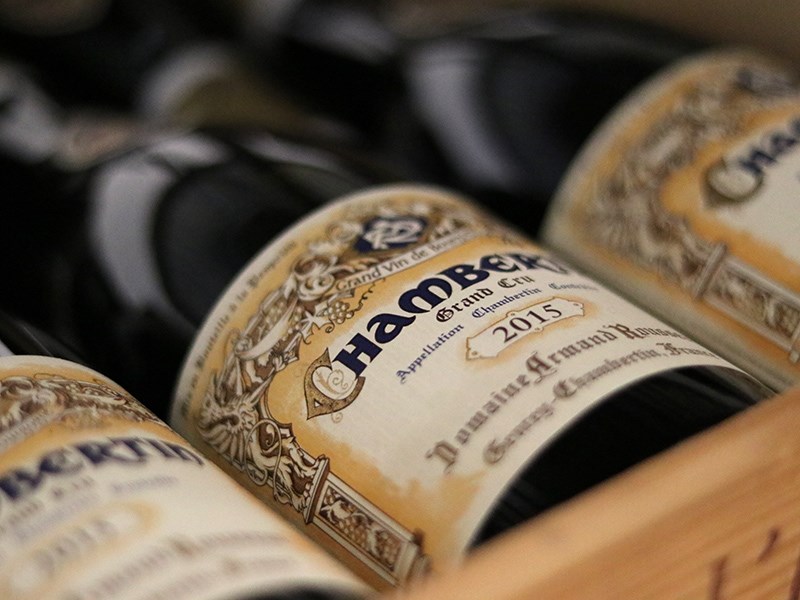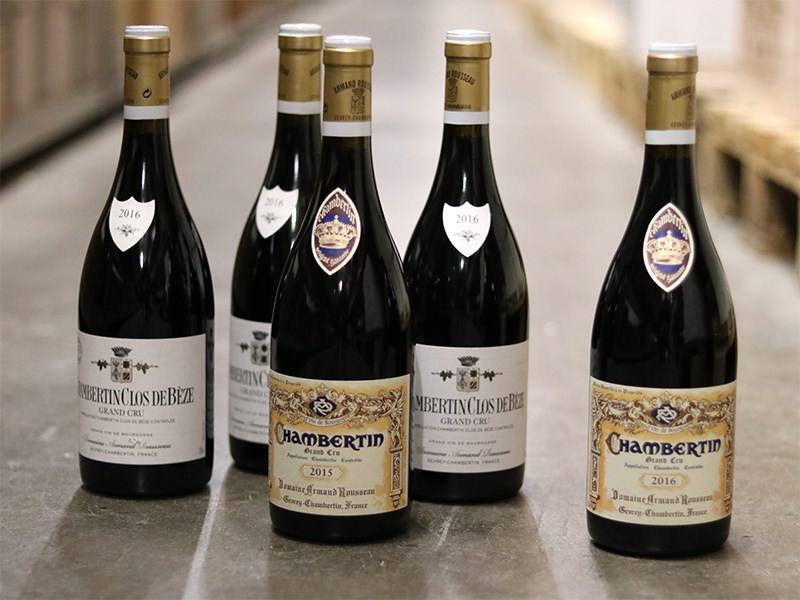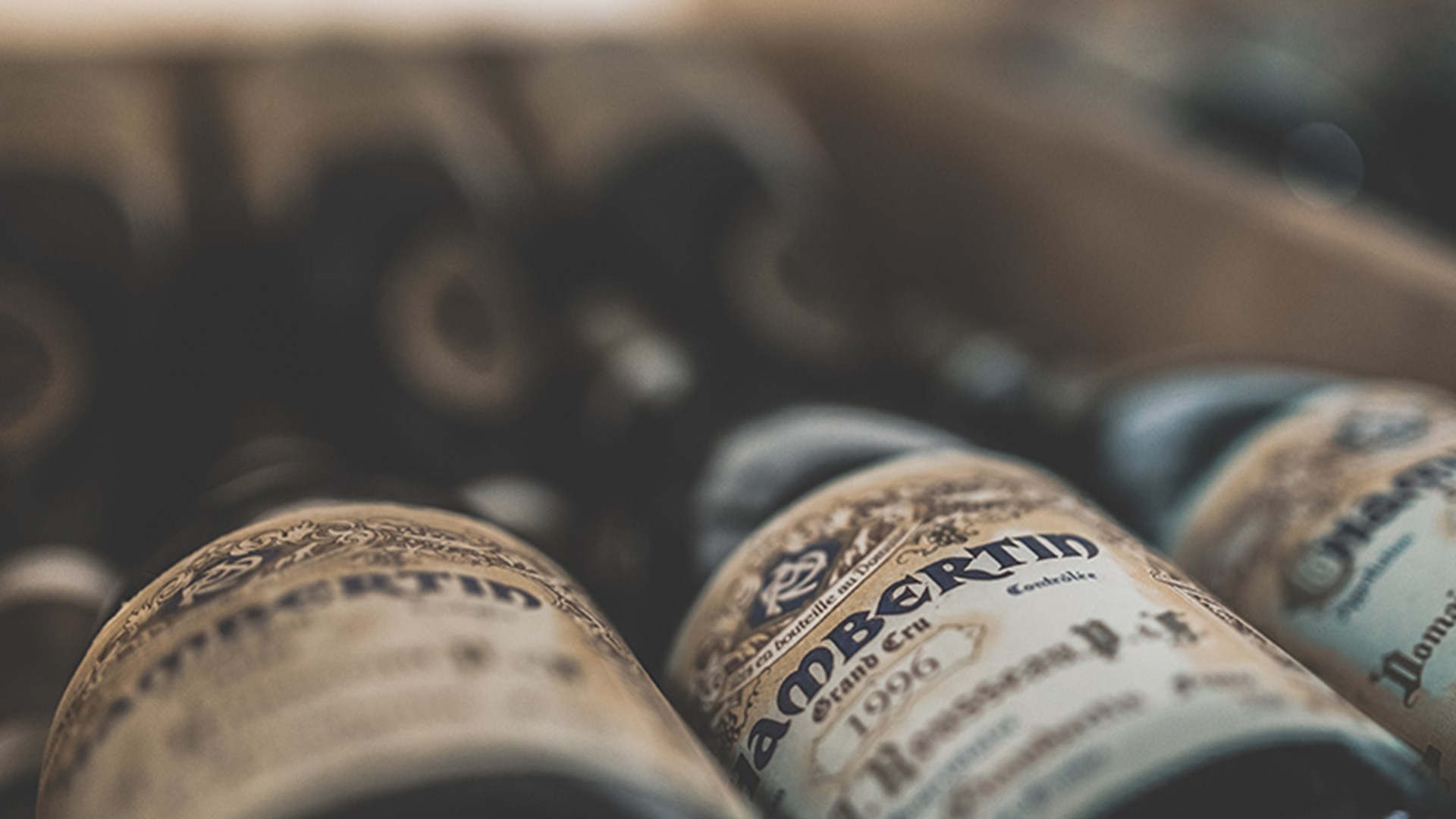Article - RareWine Academy
Armand Rousseau - The Uncrowned King Of Gevrey-Chambertin
Wine is at the core of Rousseau's DNA - generation after generation. With love for Pinot Noir, respect for tradition and modern adaptation, the domain has achieved success in
”This is one of Burgundy’s greatest domains any way you look at it – in history, in holdings and in quality of wine.”
- Jasper Morris, MW
Armand Rousseau is almost synonymous with Gevrey-Chambertin. If there is one domain that has contributed to this appellation over the past four generations, it is Armand Rousseau and his descendants.
Today the Rousseau family owns 15 hectares of vineyards mainly in Gevrey-Chambertin and a small part in Morey-Saint-Denis. Of these 15 hectares, 8.5 hectares are classified at the highest level as Grand Cru and a further almost four hectares classified as Premier Cru. That is an impressive holding from a Burgundy perspective.
Armand Rousseau And The Beginning
Armand Rousseau was born in 1884 as part of a family that was heavily involved in winemaking in Burgundy at the time. The family acted as negociants, barrel makers and wine growers. In 1909, Armand Rousseau's marriage made even more land available. At the same time, the family settled in the current domicile in the old part of Gevrey-Chambertin.
In the first decades, Armand, like many others at the time, worked selling his grapes to the big wine houses, who then sent the wine to market. This gave him the capital to expand his land holdings, and, in those years, he bought parcels at Charmes-Chambertin, Clos de la Roche and Chambertin itself. To this day, these remain among the most important land holdings the Rousseau family has.

Rousseau In A Historical Perspective
At the beginning of the last century, everyday life was very different for the winegrowers of Burgundy. There was a sharp separation between the wine merchants (negociants) and the winegrowers on the domains. The families on the domains cultivated the vineyards and then delivered either grapes or in some cases finished wine to the wine merchants. This meant that the wine merchant could send the wine to market and guarantee its quality - many merchants had strict quality requirements for producers. It was indeed a great time for merchants like Remoissenet, Drouhin and others. This was the practice in much of France during this period, and many of these merchants owned few or no vineyards themselves.
In the period after the First World War, some of the smaller producers were interested in exporting their wine directly to customers - especially to the growing American market. This meant that the first producers began bottling on the winery premises in the 1920s. Armand Rousseau followed suit in the early 1930s and was one of the first to capitalise on this particular opportunity.
The advantage for the domains of bottling themselves was that they got more control over their own wine. It suited French pride, but also meant that the consumer knew exactly who had produced the wine in question. In both the short and long term, this caused prices to rise along with interest. This ended happily for the domains on all fronts, and today it is the preferred way for any quality-conscious domain.
This was also the key to the very attractive US market for Armand Rousseau, and today exports are still an important part of the domain's earnings.
Negociants have adapted to the new world by acquiring vineyards and working much more closely with the growers they source wine from.
Armand, Charles, Eric And Cyrille - The Rousseau Family
Unfortunately, on his way home from hunting in 1959, Armand crashed his car and lost his life. This meant that the next generation, with their son Charles Rousseau in charge, safely had to carry on the family business. Charles was responsible for the expansion of important vineyards and the first vineyard to be acquired was the legendary Clos Saint-Jacques, which Armand had acquired in Charles' name. Personally, Charles was in charge of acquiring parcels at Mazis-Chambertin, Clos de Beze and the monopoly Clos des Rouchottes, while continuing the legacy and building the export market.
Charles Rousseau's son, Eric, came on board in 1982 after completing a degree in oenology at the University of Dijon and after staying with several of his colleagues in Burgundy. Eric had big visions of creating more sustainable vineyards. His belief that good wine is made in the vineyard resulted in the start of green pruning, where the less than optimally ripe grapes are cut off before the last part of the growing season. At the same time, he moved towards a more organic approach to working in the vineyards.
Cyrille Rousseau is the daughter of Eric, and she has taken a very modern path towards coming home to the family business. The norm was to stay home and learn from the older generations. Cyrille took degrees in geology and viticulture in Dijon. She has also travelled the world to see how to work in both vineyards and cellars through work in New Zealand, Oregon, and Australia. She wanted to learn other processes and methods to bring new inspiration home to Burgundy.
New knowledge from other parts of the world helps to maintain the family's innovative approach to winemaking in the otherwise very traditional Burgundy. Cyrille now runs the domaine with her father, Eric. It is a family tradition to work side by side between generations to create the best transfer of knowledge and vision. However, there is no doubt that Cyrille's education has helped to take the wines to another level.

Rousseau's Quest For The Great, Perfect Wine
Domaine Armand Rousseau does not rest on its famous laurels, as there is a constant focus on improving and creating the next perfect wine from one of the family's fantastic vineyards.
Both Cyrille and her father have a love for Pinot Noir, which is why there is full focus on this complex grape. In Burgundy, Pinot Noir is the heart, and it is the grape that is used as the medium to express the terroir of each vineyard. Growing Pinot Noir, however, requires a dexterity of touch, as it is not easy to handle with its small dense clusters.
The Rousseau family's approach is to express grape, cluster, vine, parcel, and vineyard in the best possible way. This is practiced by keeping all work in the vineyards and cellar as close to the original as possible. Vineyards are plowed, and spraying is minimal. Rousseau is not organically certified but pays attention to what is done to maintain an active life in the vineyards with both insects and small animals. The vines are planted in the traditional way with about 11,000 plants per hectare. On average, the vines are 45 years old, and in the cellar, the wine is fermented in steel tanks with the natural yeast. All wines are then aged in a combination of new and used barrels for an extended period.
In total, the family now produces 65,000 bottles a year, of which 80 % are exported. These are all wines that are considered benchmarks in Gevrey-Chambertin and have the potential to develop for many years in the cellar.
The Vineyards Of Armand Rousseau
If you are lucky enough to be invited to the cellar of a wine producer, the procedure will often be to taste the wines ranked by quality - often from regional to Village to Premier Cru and ending with Grand Cru. However, this is not the order at Rousseau, which strongly indicates that the ranking of Rousseau wines is not defined by their classification. At Rousseau, however, Clos Saint Jacques is served third last just before Chambertin and Chambertin Clos de Beze. This shows that the family considers Clos Saint Jacques to deliver wines at the Grand Cru level.

The Main Wines From Domaine Armand Rousseau
Champ De Bertin: Chambertin Grand Cru
Chambertin is not just a suffix to the commune of Gevrey-Chambertin. It is also one of the absolute best vineyards in Burgundy, perhaps in the world. Indeed, it is referred to, along with Romanée-Conti and Musigny, as the triumvirate that produces the very best wines on the market.
In the 12th century, there was a man named Bertin. He chose to cultivate this vineyard right next to the one cultivated by the monks of Beze. His wine was so great that it became known by his name: "The vineyard belonging to Bertin" - or in French "Champ de Bertin", which over the years was contracted to the more vernacular Chambertin. Today, this is the most prestigious vineyard in the Gevrey-Chambertin commune.
Armand Rousseau owns four parcels here, all of which contribute to the complexity of this wine.
Chambertin measures a total of 12.9 hectares, and Armand Rousseau is the largest landowner with a total of 2.56 hectares. It is a vineyard that delivers wines from the very top - not only from Rousseau. Also worth mentioning is Domaine Leroy, which with its 0.5 hectares is one of the most coveted wines from Chambertin. Domaine Trapet, the second largest landowner, is also doing very well with its 1.9 hectares. Dugat-Py and Dujac, both of which have only 0.05 hectares and make microscopic quantities, should also be watched closely.
Chambertin Clos De Beze Grand Cru
Chambertin Clos de Beze takes its name from the monks of the Beze monastery, and historically it is the oldest recognised vineyard in the commune. Today, there is no doubt that it generally ranks just below Chambertin, but still ranks among the most distinguished vineyards in the area. Rousseau owns 1.42 hectares at Clos de Beze, divided into two parcels, the largest of which is in the upper part of the vineyard.
Chambertin Clos de Beze measures 15.40 hectares, and Armand Rousseau is the third largest landowner with 1.42 hectares. Other top producers from this vineyard include Domiane Prieure-Roch from 1.01 hectares, Dujac from its 0.24 hectares and Bruno Clair from 0.98 hectares.
Clos Saint-Jacques Premier Cru
Clos Saint-Jacques Premier Cru is at the top of its class and is mentioned alongside Cros Parantoux and Les Amouresses as the best Premier Cru vineyards in Burgundy. It lies on the opposite slope to the Grand Cru vineyards of Gevrey-Chambertin, and only small things explain why it is not classified as a Grand Cru. Of the four wines produced on the Clos Saint Jacques vineyard, it is the wine from Rousseau that gets the most splendid reviews.
Clos Saint-Jacques measures a total of 6.70 hectares, and with 2.22 hectares Rousseau has about one third of the vineyard. The other four producers on the vineyard also make great wines - just not quite on the same level as Rousseau. These are Fourrier with 0.89 hectares, Jadot with 1 hectare, Bruno Clair with 1 hectare and Sylvie Esmonin with 1.60 hectares.
Ruchottes-Chambertin, Clos Des Ruchottes, Monopole, Grand Cru
This is a complete 'monopole' where Rousseau owns an enclosed part of the larger Grand Cru. Ruchottes-Chambertin measures 3.30 hectares, of which 1.06 hectares are enclosed by a stone wall called Clos des Ruchottes and owned 100 % by Rousseau. This may also be the best part of the Ruchottes-Chambertin vineyard, from which Rousseau delivers a wine known for plenty of complexity and great finesse.
Clos De La Roche Grand Cru
Clos de la Roche is the only parcel Armand Rousseau has outside Gevrey-Chambertin. Rousseau has two parcels at Clos de la Roche, which is located in Morey-Saint-Denis. Rousseau chooses to harvest the grapes from the two parcels and vinify them together. In total, Clos de la Roche measures 16.90 hectares, and Rousseau owns 1.48 hectares in total. Other notable producers from here are Domaine Ponsot, who owns a whopping 3.31 hectares, as well as Dujac, Cocquard-Loison-Fleurot, Lignier and not least Leroy.
Mazy-Chambertin Grand Cru
Mazy-Chambertin is the northernmost of the Grand Cru vineyards in Gevrey-Chambertin, where Rousseau has a small parcel of 0.53 hectares. The style is often with good structure and intensity of flavour, but without the finesse you find in Chambertin. In total, the vineyard measures 9.1 hectares and is unofficially divided into an upper and lower half. Rousseau has his parcel in the lower half, where the wines are less intense.
The most famous wines from Mazy-Chambertin are from d'Auvenay from 0.26 hectares and Faiveley, which produces a fine wine from its 1.56 hectares.
Charmes-Chambertin Grand Cru
At Charmes-Chambertin Armand Rousseau owns three parcels, one of which is on Mazoyeres-Chambertin, but may be blended with the grapes of Charmes-Chambertin. This is due to legislation from the time when the appellation rules were written in 1936. Therefore, it is the largest Grand Cru in Gevrey-Chambertin, of which Armand Rousseau owns only 1.37 hectares in total. There are many fine editions from this vineyard, the most desirable being Dugat-Py from 0.72 hectares and Dujac from its 0.70 hectares.
The future of Domaine Armand Rousseau
With Cyrille (born 1988) at the helm, the immediate future of the Rousseau family business is under control. The changes Eric Rousseau has introduced to the vineyards have taken quality to new heights and there is no doubt that the course is set in the right direction. These wines enjoy great fame today and their position at the top will be hard to challenge.
Today Domaine Armand Rousseau ranks among the absolute biggest names. And a direct comparison with Domaine de la Romanée-Conti, Domaine Leroy and other luminaries can rightly be made. It is of course Rousseau's collection of vineyards that keeps them at the top, but also their ability to express the grapes they harvest.
Domaine Armand Rousseau has raised the quality over several years with Eric Rousseau at the helm, but with his well-educated daughter, new things are happening at the domain. Since Cyrille Rousseau joined the vineyard and cellar from the 2012 vintage, processes have tightened up. Critics are talking about wines that are more precise in their expression and that manage to show the character of the vintage without compromising either the producer or the expression of the vineyard. At Rousseau, this is reflected in the reviews, which are only getting better. Asked directly, they reply with their usual humility: "We do what we always do."
